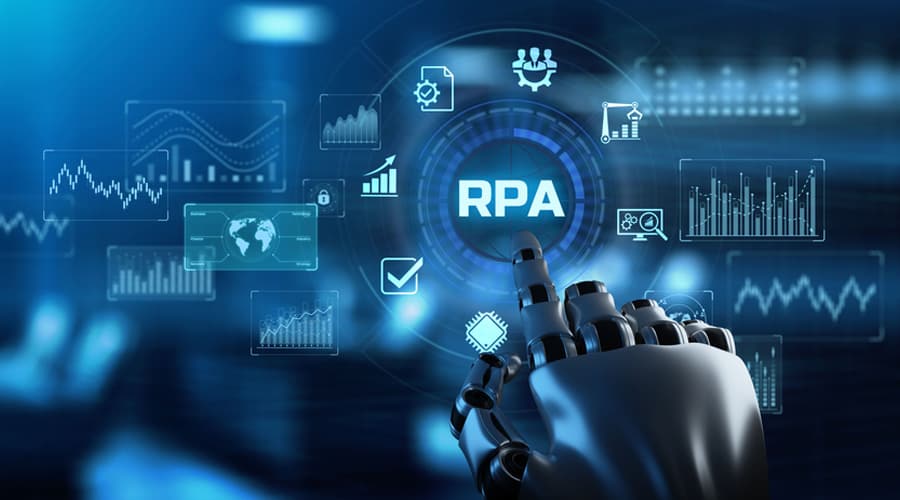
What is robotic process automation?
Robotic process automation (RPA) is a software technology that makes it easy to build, deploy, and manage software robots that emulate humans actions interacting with digital systems and software. Just like people, software robots can do things like understand what’s on a screen, complete the right keystrokes, navigate systems, identify and extract data, and perform a wide range of defined actions. But software robots can do it faster and more consistently than people, without the need to get up and stretch or take a coffee break.
What are the business benefits of RPA?
Robotic process automation streamlines workflows, which makes organizations more profitable, flexible, and responsive. It also increases employee satisfaction, engagement, and productivity by removing mundane tasks from their workdays. RPA is noninvasive and can be rapidly implemented to accelerate digital transformation. And it’s ideal for automating workflows that involve legacy systems that lack APIs, virtual desktop infrastructures (VDIs), or database access.
Why is RPA transformative?
RPA technology is changing how the world gets work done. Software robots—instead of people—do repetitive and lower-value work, like logging into applications and systems, moving files and folders, extracting, copying, and inserting data, filling in forms, and completing routine analyses and reports. Advanced robots can even perform cognitive processes, like interpreting text, engaging in chats and conversations, understanding unstructured data, and applying advanced machine learning models to make complex decisions.
When robots do these types of repetitive, high-volume tasks, humans are freed to focus on the things they do best and enjoy more: innovating, collaborating, creating, and interacting with customers. Enterprises get a boost too: higher productivity, efficiency, and resilience. It’s no wonder that RPA is rewriting the story of work.
Where can RPA be used?
Today, RPA is driving new efficiencies and freeing people from repetitive tedium across a broad swath of industries and processes. Enterprises in industries ranging from financial services to healthcare to manufacturing to the public sector to retail and far beyond have implemented RPA in areas as diverse as finance, compliance, legal, customer service, operations, and IT. And that’s just for starters.
RPA has become so widespread because it is broadly applicable. Virtually any high-volume, business-rules-driven, repeatable process is a great candidate for automation—and increasingly so are cognitive processes that require higher-order AI skills.
What features and capabilities are important in RPA technology?
To build and manage an enterprise-wide RPA program, you need technology that can go far beyond simply helping you automate a single process. You require a platform that can help you create and manage a new enterprise-wide capability and help you become a fully automated enterprise™. Your RPA technology must support you end-to-end, from discovering great automation opportunities everywhere, to quickly building high-performing robots, to managing thousands of automated workflows.
Is RPA the same as artificial intelligence (AI)?
RPA is not AI; AI is not RPA. But the combination of RPA and AI unlocks massive new possibilities for enterprises everywhere. For one thing, RPA technology now makes it possible to insert advanced AI skills in the form of machine learning models, natural language processing (NLP), character and image recognition, and more into RPA robots. Giving robots these AI skills dramatically expands their ability to handle cognitive processes that require things